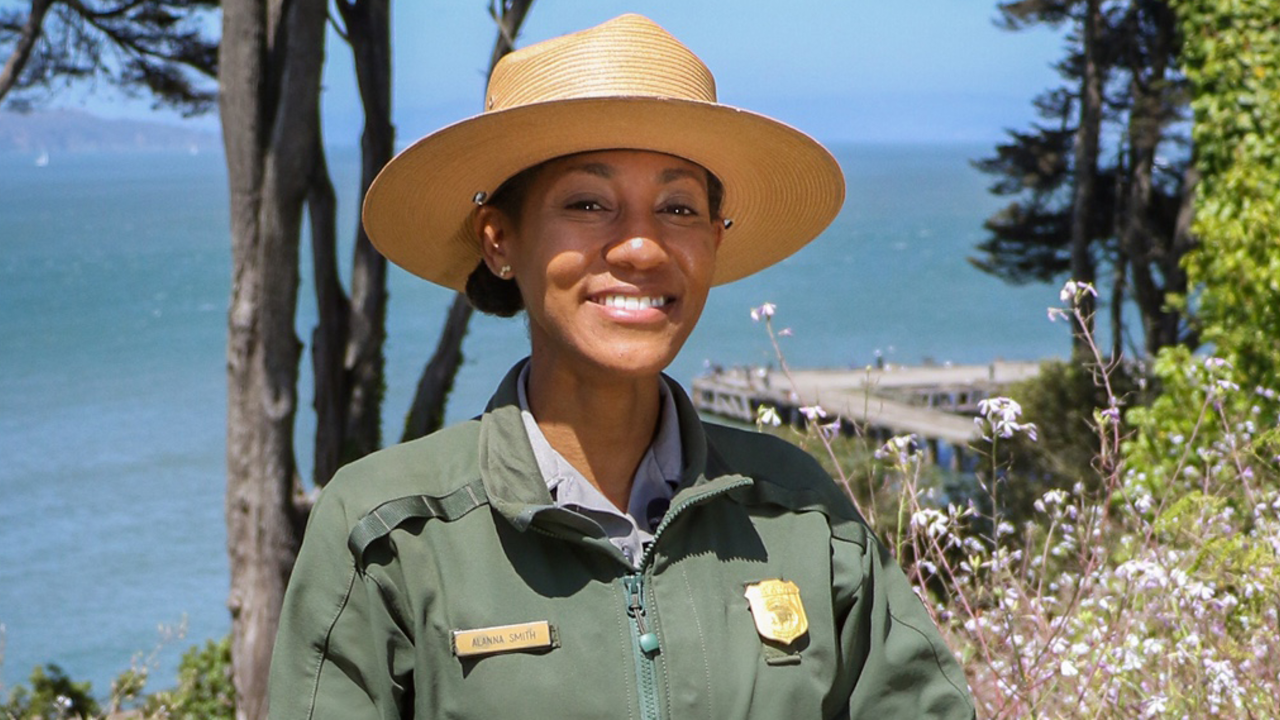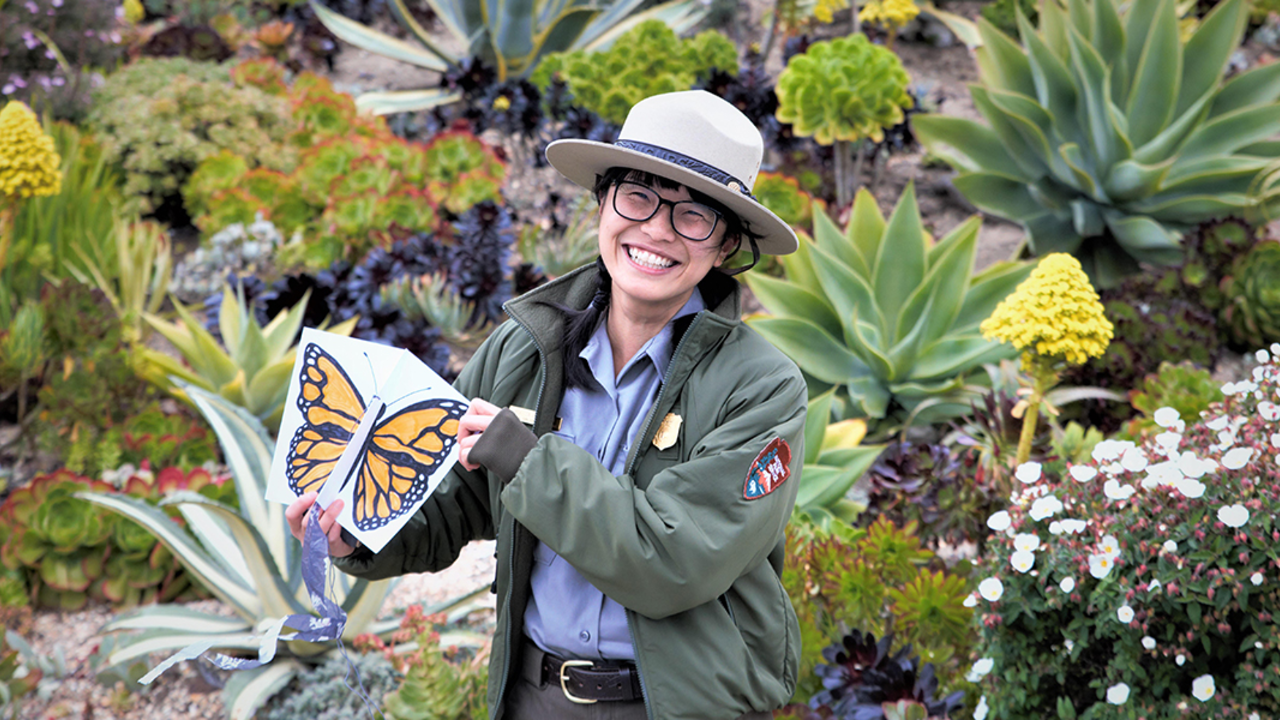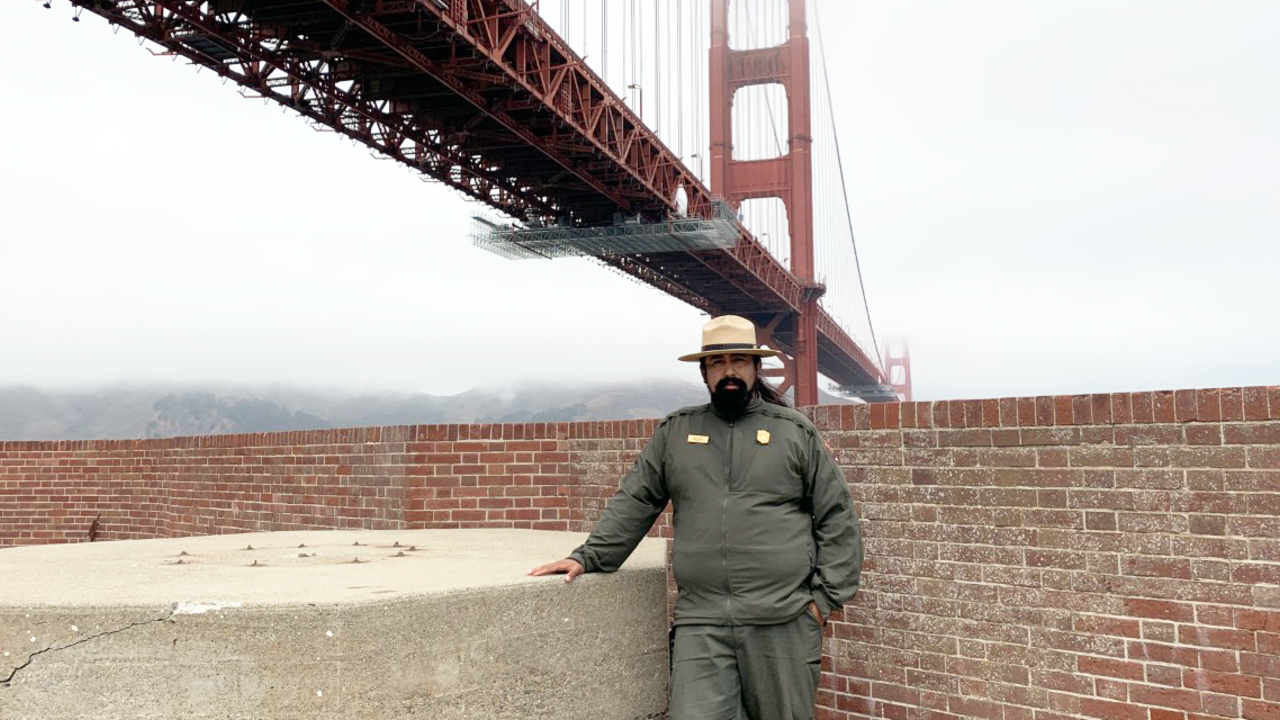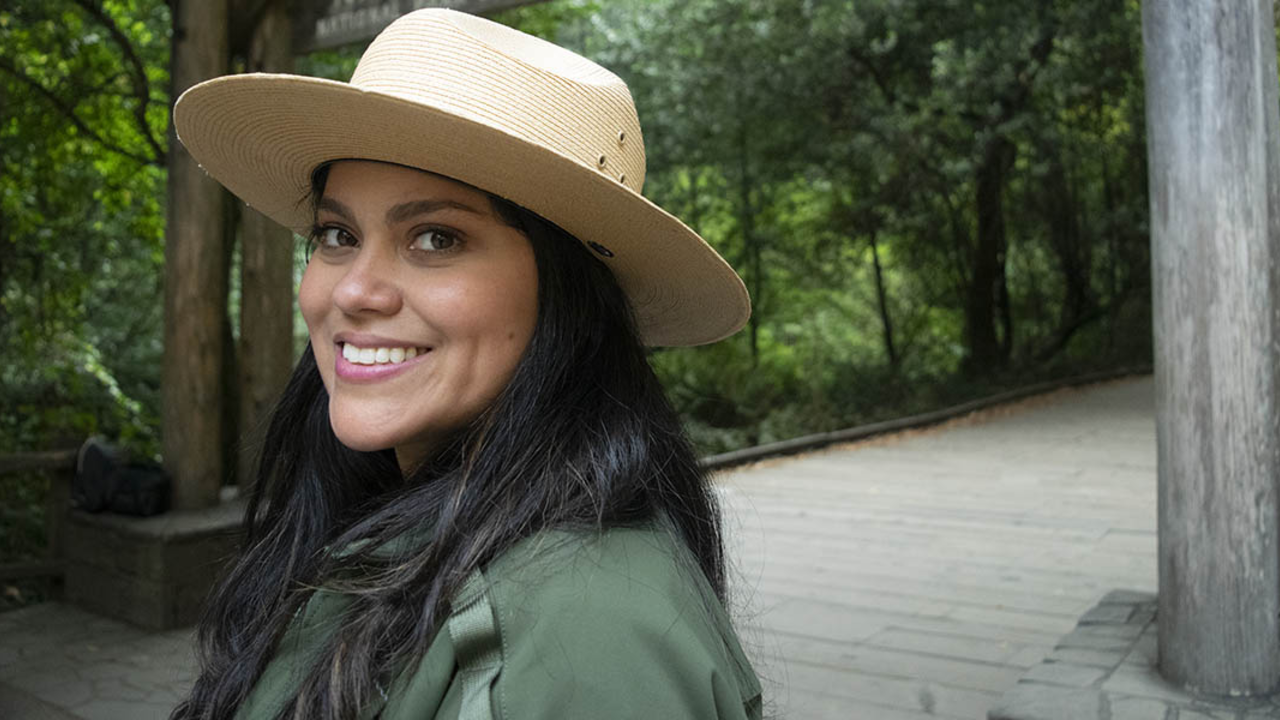Learning through the parks with Ranger Alanna Smith

Credit: National Park Service
Park Ranger Alanna Smith’s career with the National Park Service started with an internship in 2012. In the decade that followed, she’s worked as a Park Guide at the U.S. Virgin Islands National Park and now with K-12 students and teachers as the Presidio Education Program Manager.
“After I finished my yearlong internship, I knew this was it for me,” said Ranger Alanna. “I was excited to dig into all the different places this career could take me.”
“My role in national parks is to inspire youth and to create programs that are more inclusive and that tell the story of all people. That’s my calling in the park service.”
Here's more of our conversation with Ranger Alanna:
What do you work on in the Presidio?
I work in education, interacting with teachers and K-12 students. We want to provide opportunities for students to get out and experience the park, and we want to support teachers by providing workshops and sharing research we uncover here, modeling how the park can fit into their curriculum.
How can parks be a tool for learning?
Let’s say a class is learning about civil rights: They can look at the John Harris case at the Sutro Baths, one of the earlier civil rights cases, dig into primary resources and different documents to learn through and about this case. They’re learning about history in a national and locally specific context through their national parks.
Another great example of the parks as a teaching tool is Living with the Land, a new sixth grade program at Presidio Tunnel Tops where students will learn about Ohlone values and perspectives centered around the Crissy Marsh wetlands. The program uses the park to contrast western science and traditional knowledge, human impact, and how we can be taking better care of the wetlands.
What connections do you see from the past to the present?
We see some of the same patterns repeat throughout time: different people who have made sacrifices with the goal of being seen as American, serving their country, standing up for what’s right. All were trying to better the situation for themselves. By looking at the past we can be aware of what continues to happen and can be inspired to meet ongoing challenges.
We talk about the Buffalo Soldiers, who were some of the first Black Americans serving in the US Army. In the program in the Presidio, we can connect their struggle to similar struggles in the current movement for Black lives.
What stories do you want to keep sharing and finding?
We’re always on the lookout for what stories are not being told, whose perspectives we have not heard in some of our stories. We don’t know what we haven’t uncovered. We’ve spent a lot of time in the park archives and looking through old newspapers, as well as building on the bank of knowledge that we have from Rangers and past interns, but we're always trying to find out more.
I started at NPS because I loved the environment and I wanted to do anything to protect it. Over the years I’ve realized that we need to take care of people as part of the environment, that means telling their stories.



